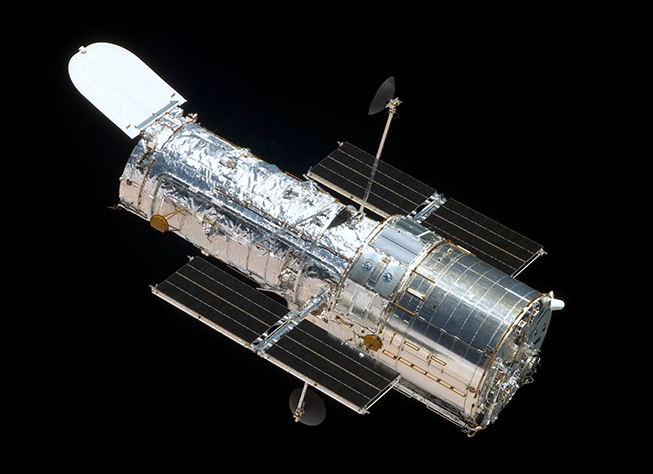The National Aeronautics and Space Administrations (NASA) Hubble Telescope takes the clearest images of the universe and transmits these to Earth via its antennas. From 1978 to 1980, DARPA funded the design, fabrication, delivery and installation of two antenna booms for the Hubble Space Telescope to demonstrate the advantages of metal-matrix composites. Made of a graphite-fiber/aluminum matrix, these booms permit radio frequency conduction while simultaneously serving as structural supports. Deploying this dual-use composite material resulted in a 60% weight savings over an alternative boom- design candidate. Through this new material technology, DARPA met NASAs design requirements for weight, stiffness, and dimensional stability. DARPA also contributed to the Hubbles optical successes. The telescope incorporates algorithms and concepts pioneered by DARPAs Directed Energy Program in the late 1970s and early 1980s, by which mirrors can be deliberately deformed to correct for wavefront imperfections.
